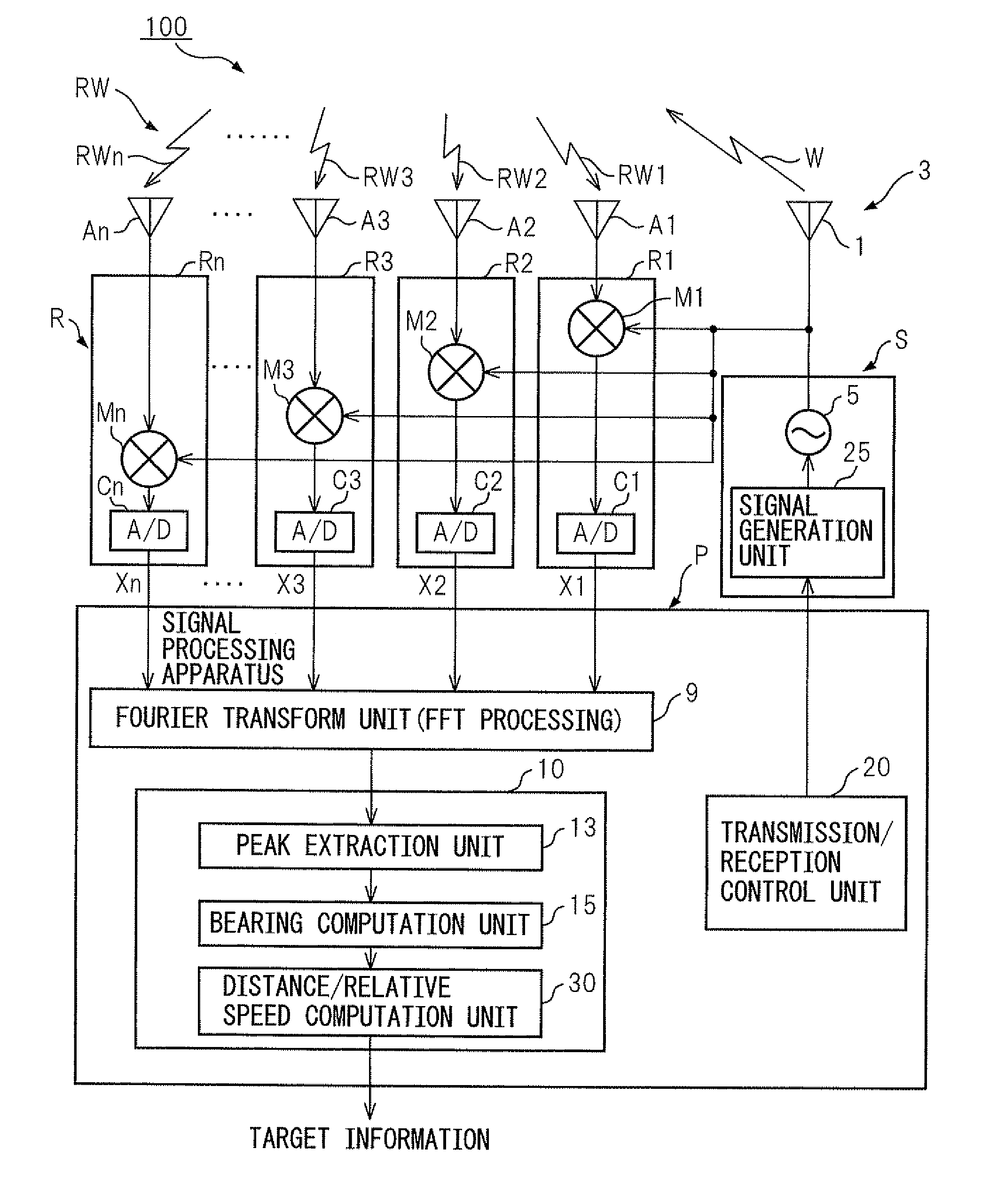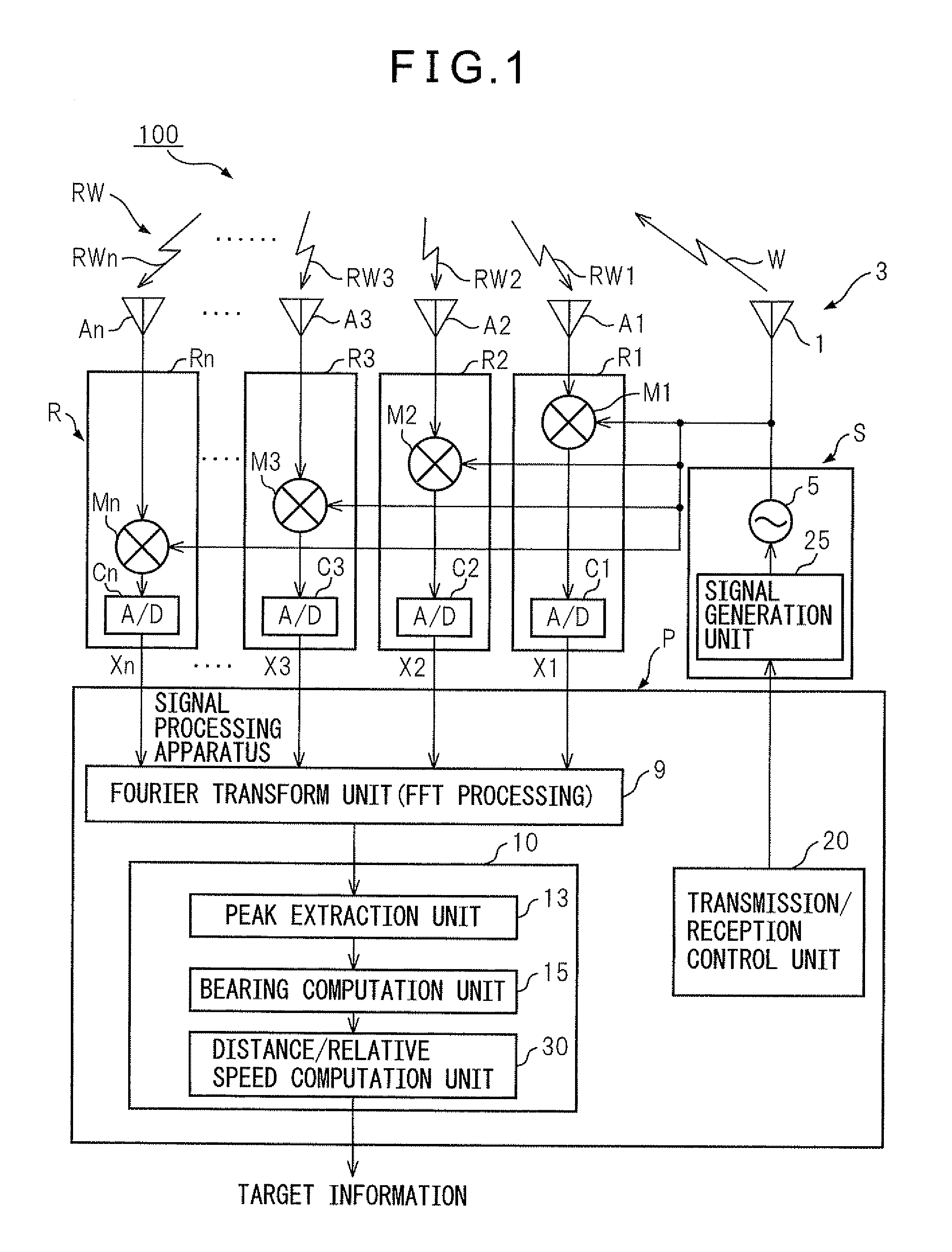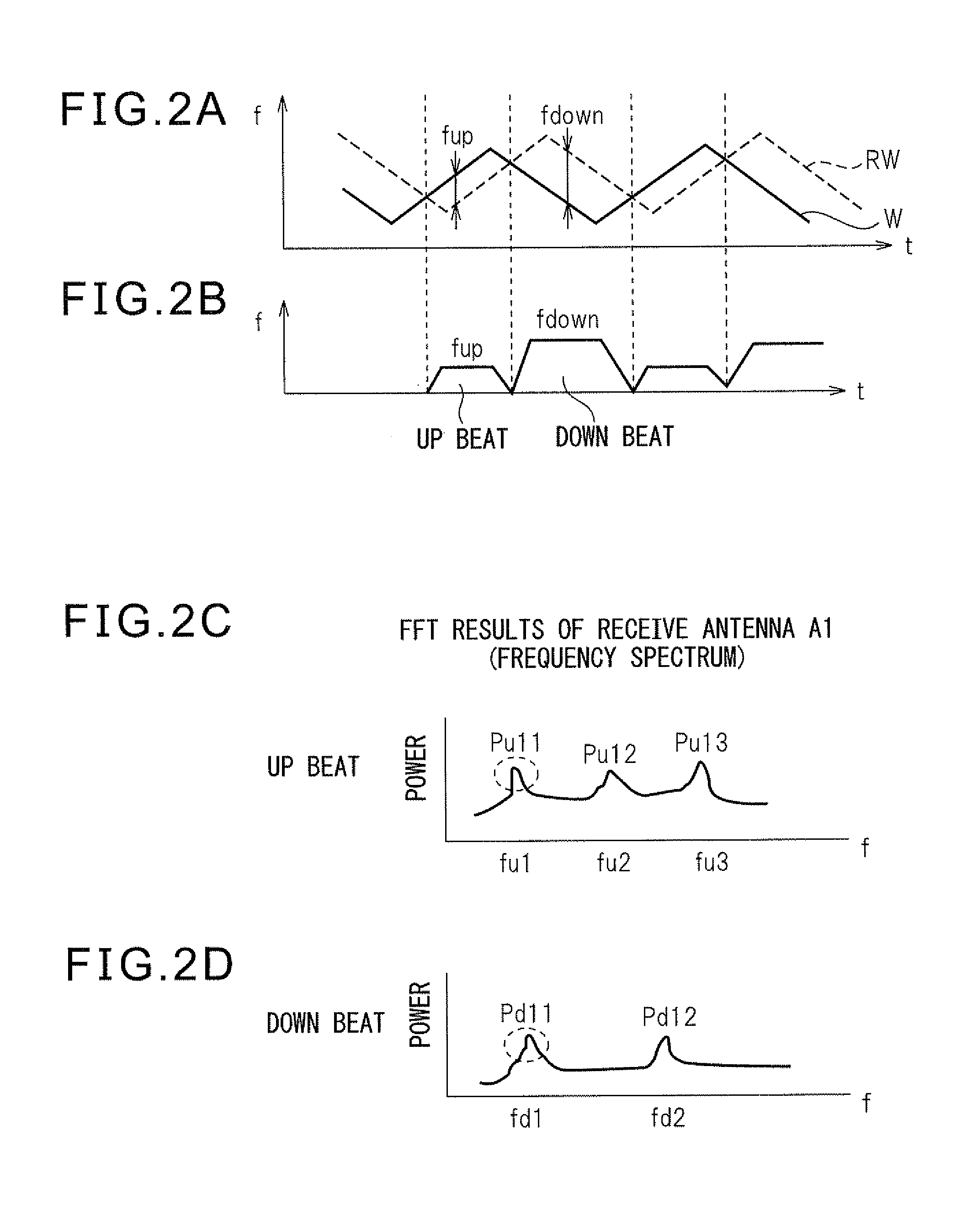Radar device and method of calculation of receive power in radar device
a radar device and receive power technology, applied in the direction of measurement devices, using reradiation, instruments, etc., can solve the problems of mispairing, inaccurate calculation of the power of the reflected wave, and inability to accurately calculate the receive power
- Summary
- Abstract
- Description
- Claims
- Application Information
AI Technical Summary
Benefits of technology
Problems solved by technology
Method used
Image
Examples
Embodiment Construction
[0044]Below, the attached drawings will be used to explain in detail the aspects of the present application based on specific embodiments.
[0045]FIG. 1 shows the configuration of a radar device 100 of one embodiment of the present invention. The radar device 100 of this embodiment is comprised of a sending unit S, a receiving unit R, and a signal processing system P. The signal processing system P, while illustration of the detailed configuration is omitted, is configured provided with a microprocessor. There are also a Fourier transform unit 9, a distance / relative speed processing unit 10, and a sending / receiving control unit 20.
[0046]The sending unit S is provided with an oscillator 5 and a signal generation unit 25. The signal generation unit 25 is controlled by a sending / receiving control unit 20 located at the signal processing system P. The signal generation unit 25 supplies a triangular wave-shaped modulated signal (triangular waves) as the transmit signal to the oscillator 5 ...
PUM
 Login to View More
Login to View More Abstract
Description
Claims
Application Information
 Login to View More
Login to View More - R&D
- Intellectual Property
- Life Sciences
- Materials
- Tech Scout
- Unparalleled Data Quality
- Higher Quality Content
- 60% Fewer Hallucinations
Browse by: Latest US Patents, China's latest patents, Technical Efficacy Thesaurus, Application Domain, Technology Topic, Popular Technical Reports.
© 2025 PatSnap. All rights reserved.Legal|Privacy policy|Modern Slavery Act Transparency Statement|Sitemap|About US| Contact US: help@patsnap.com



